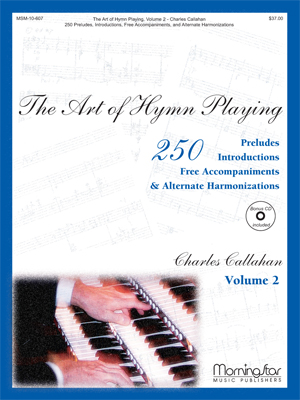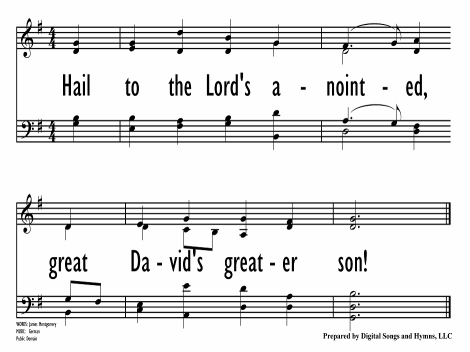- |
User Links
ES FLOG EIN KLEINS WALDVÖGELEIN

ES FLOG EIN KLEINS WALDVÖGELEIN
Published in 43 hymnalsPrintable scores: PDF, MusicXML
Audio files: MIDI, Recording
Tune Information
| Title: | ES FLOG EIN KLEINS WALDVÖGELEIN |
| Meter: | 7.6.7.6 D |
| Incipit: | 11531 71256 11711 |
| Key: | G Major |
| Source: | German;Memmington ms., 17th century;Traditional German melody |
| Copyright: | Public Domain |
Texts
Hail to the Lord's AnointedHail to the Lord's Anointed,
great David's greater Son!
Hail in the time appointed,
his reign on earth begun!
He comes to break oppression,
to set the captive free;
to take away transgression,
and rule in equity.
Alternative Tunes
Notes
ES FLOG EIN KLEINS WALDVOGELEIN, a German folk tune, was first published in an early-seventeenth-century manuscript collection from Memmingen, Germany. It later became a setting for Christopher Wordsworth's (PHH 361) "O Day of Rest and Gladness" in George R. Woodward's Songs of Syon (1910 edition). The tune shares its opening motive and also its bar-form structure (AABA') with LOBE DEN HERREN (253). ES FLOG's combination of a sturdy tune and an able harmonization calls for energetic art singing that remains vibrant but not rushed. Psalm 72 also lends itself to antiphonal performance: the outer stanzas (1, 6) may be sung by everyone; the other stanzas by alternating groups.
--Psalter Hymnal Handbook. 1988
Timeline
Arrangements
Harmonizations, Introductions, Descants, Intonations
|
Organ Solo
|
Piano Solo
|
Media
Psalter Hymnal (Gray) #72
Text: Hail to the LORD's Anointed- MIDI file from Christian Classics Ethereal Hymnary #1084
- MIDI file from Christian Classics Ethereal Hymnary #1084
- Audio recording from Glory to God: the Presbyterian Hymnal #393
- Audio recording from Glory to God: the Presbyterian Hymnal #644
- Audio recording from Glory to God: the Presbyterian Hymnal #733
- Audio recording from Lift Up Your Hearts: psalms, hymns, and spiritual songs #109
- Audio recording from Lift Up Your Hearts: psalms, hymns, and spiritual songs #109
- Audio recording from Lift Up Your Hearts: psalms, hymns, and spiritual songs #109
- Audio recording from Lift Up Your Hearts: psalms, hymns, and spiritual songs #109
- Audio recording from Lift Up Your Hearts: psalms, hymns, and spiritual songs #109
- MIDI file from Psalter Hymnal (Gray) #72
- MIDI file from Psalter Hymnal (Gray) #72
- Audio recording from Small Church Music #1661
- Audio recording from Small Church Music #1921
- Audio recording from Small Church Music #1921
- Audio recording from Small Church Music #3428
- MIDI file from Sing! A New Creation #102
- MIDI file from Sing! A New Creation #120


 My Starred Hymns
My Starred Hymns






